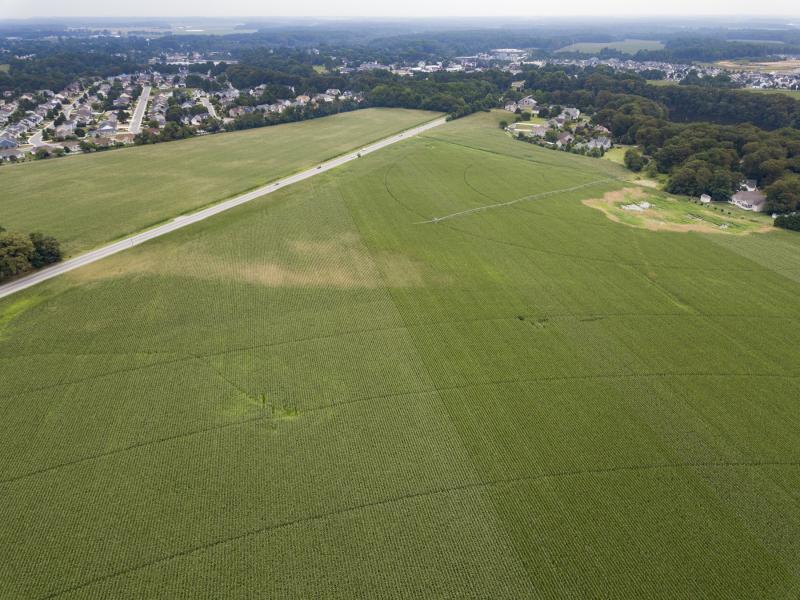Milton Town Council approved the funding and creation of a special development district for the proposed Granary at Draper Farm development.
At its Oct. 9 meeting, council approved a resolution to create the funding for the special development district, which passed with a 4-2 vote. Council also approved an ordinance that creates the district itself, which passed 6-0. New Councilman Tom Arkinson abstained from both votes because he only took his seat that night.
Mayor John Collier referred to a special development district as “an interesting financing tool,” that has been used in small municipalities before, most notably Bridgeville. A special development district is a special tax levy to be paid by Granary residents only. The town would agree to issue special obligation bonds – bonds that Convergence officials say are backed by Granary residents, not the town – up to $42 million. The proceeds from that tax will be put into a special fund to be used to fund public infrastructure improvements within and potentially outside Granary. The special tax does not preclude developer Convergence Communities from paying town-required performance bonds, which sets aside money to ensure roads and other infrastructure are completed. The developer would then use that money to pay for infrastructure projects benefiting the public, which could include streets, sidewalks and parks and recreation facilities. Convergence has pledged to make up to 55 acres of the parcel into public open space, create a biking and walking trail connecting to the town’s Rails to Trails, and install an amphitheater for public use within the development.
Convergence has agreed to give the town up to $5 million from proceeds raised by the special development district to use on other infrastructure projects. However, that money comes with strings attached. First, only projects built inside Granary that benefit its residents will be covered 100%. Projects outside the development or located within but benefit people outside the development would be covered 33%, with the town required to cover the remaining costs. The town will get the money in three tranches, with the first expected to come in 2024, when the project is supposed to break ground. Two remaining tranches are eyed for 2030 and 2035. The town has three years to spend the money or it reverts back to Convergence.
The special tax funds will be administered by a third party selected by the town and collected at the same time as property taxes. Residents have the option to prepay the tax. According to the ordinance, the bonds will be sold at a negotiated, limited public offering.
The Granary at Draper Farms is proposed as a 1,350-unit development on a 450-acre parcel on Sand Hill Road. The build-out is scheduled to take place over 20 years in 10 sections, with the first section already having received preliminary site-plan approval from the planning and zoning commission. The development will be mainly residential, but some small commercial development is planned.
During the Oct. 9 public hearing on the district, the main concern from residents is that the language of the district seems vague and hard to understand.
“I don’t believe we really understand what we’re getting into,” said resident Allen Sangree. “Have you all had time to fully understand and comprehend what you’re about to put into law?”
Former Councilman Sam Garde said while he is neither for or against the district, he advised council to table the matter if they do not fully understand it.
Sangree said the special district will be a $172 million tax burden on residents of the Granary and that he does not believe the town should be in the business of helping a private developer fund its project. He said he also believes the development will be a tax revenue burden on the town because the developer will have to discount the price of homes to entice people to buy given the extra tax from the special development district.
Emily Metzler, chief communications officer and executive vice president of MuniCap, the consulting company working for Convergence on the special district, said the $172 million that Sangree is referring to is the maximum special tax that would be levied on homebuyers. She said she expects that number to be lower, but that MuniCap wanted to put a higher number out there to be completely transparent.
“We want these homebuyers to know the maximum rate they could have,” Metzler said. She added that the figure includes administrative costs, and principal and interest associated with the financing.
Metzler clarified that while the town’s name will be on the bonds, it will not be obligated to repay in any way.
Councilwoman Randi Meredith, who voted in favor of approving the district, said she viewed the special development district as something like a community impact fee. She said the development has proposed 999 single-family detached homes, with each home taxed about $2,000 per year. Meredith said the proposed 351 single-family attached homes would pay $1,600 per year.
“This is a huge property. There’s going to be a lot of people that are going to move here. And who should be responsible for paying for those extra services that the town is going to require? Shouldn’t it be them? They’re tilting the landscape of the town by coming here. Shouldn’t they be responsible for the impact that they are going to have on all of us and themselves?” Meredith said.




















































